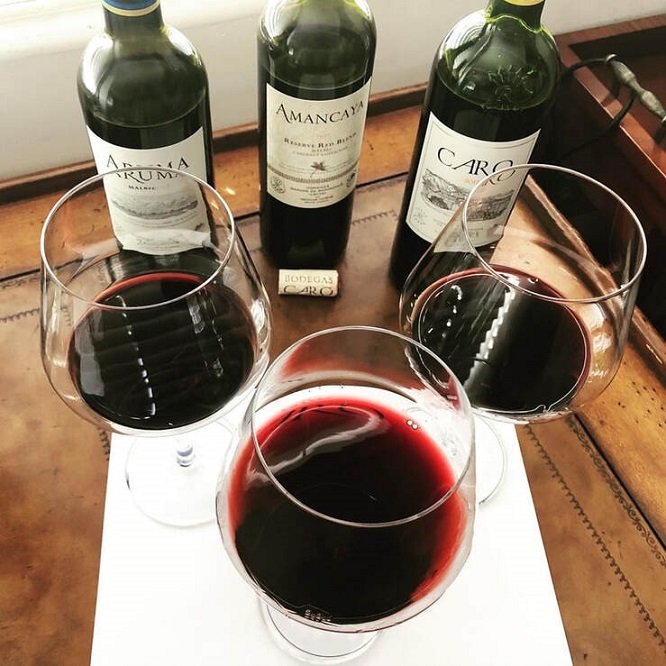
Is There Really Too Much Wine in the World?
The abundance of wine across the globe has become a pervasive topic, echoing through news headlines and economic analyses.
In Australia, the surplus is measured in staggering volumes, equivalent to 859 Olympic-size swimming pools or a more graspable 2.8 billion bottles. France, in response, earmarks 200 million euros for crisis distillation, transforming excess wine into industrial alcohol—a unique twist to your next Parisian hand sanitizer experience.
The United States, too, is not immune, with California showcasing substantial bulk wine stocks and Washington State is graced with surplus vineyards sprawling across thousands of acres. Surplus wine, however, is not a novel predicament. The inherent nature of wine as an agricultural product aligns with the cyclical “cobweb” market theory, predicting periodic surges and slumps.
Global surpluses today stem primarily from insufficient demand rather than an oversupply of wine. The issue spans continents and is exacerbated by geopolitical factors like China’s foreign policy impacting Australia’s wine exports and the European Union’s historical price support policies that fueled overproduction.
Reflecting on the trajectory of wine consumption, the golden era preceding the 2007 global financial crisis saw a steady rise. However, this ascent plateaued during the crisis and took a further hit during the COVID-19 pandemic, with global consumption now receding to levels not witnessed since the early 2000s.
The Generation Gap Hypothesis
One proposed explanation, especially in the United States, revolves around the Generation Gap Hypothesis. It posits that the Baby Boomer generation fueled the prolonged surge in wine consumption. However, subsequent generations have not embraced wine with the same fervor, leading to a decline in overall demand. Bridging this gap involves introducing younger audiences to the allure of wine, a challenge complicated by the uniqueness of each generation. This theory raises the complex question of whether Boomers are the norm, and if so, how likely are the circumstances fostering their wine enthusiasm to reoccur.
The Life Cycle Hypothesis
The Life Cycle Hypothesis proposes a more optimistic outlook. It suggests that generations, although distinct, share similarities in their latent demand for wine, which surfaces at a certain stage in life. Millennials are now approaching this stage, and later generations are expected to follow suit. However, the optimism is tempered by the realization that post-Boomer generations are smaller, making it unlikely for them to match the consumption levels of their predecessors. This hypothesis prompts a call for supply adjustments sooner rather than later.
While both generational dynamics and life cycle hypotheses provide valuable insights, the quest for a more comprehensive understanding persists. is there an economic theory underpinning the global wine glut?
While there isn’t a single economic theory that perfectly encapsulates the phenomenon of “too much wine,” several economic concepts and theories contribute to our understanding of the global wine glut.
1. Supply and Demand
Excess Supply: One straightforward economic explanation is an oversupply of wine relative to demand. Factors such as overproduction due to government policies, changes in export markets, and geopolitical shifts can lead to a surplus of wine.
2. Elasticity of Demand
Changing Consumer Preferences: If consumers’ preferences shift away from wine due to cultural changes, health trends, or other factors, the demand for wine could decrease. Understanding the elasticity of demand for wine—how responsive quantity demanded is to changes in price and other factors—helps explain shifts in consumption patterns.
3. Market Failure
Information Asymmetry: Market failure, stemming from imperfect information, could be at play. If consumers are not well-informed about the quality or attributes of different wines, it may lead to a situation where producers overproduce certain varieties, contributing to a glut.
4. Globalization
International Trade Dynamics: Globalization has interconnected wine markets worldwide. Changes in trade policies, as seen with the impact of Chinese foreign policy on Australian wine exports, can disrupt traditional market dynamics and contribute to oversupply in certain regions.
5. Boom and Bust Cycles
Cyclical Nature of Agricultural Markets: Agricultural products, including wine, often experience boom and bust cycles due to factors like weather conditions, technological advancements, and economic trends. The “cobweb” market theory mentioned in the original text reflects the cyclicality inherent in agricultural markets.
6. Structural Changes
Demographic Shifts: Economic theories related to demographic changes, such as aging populations or shifts in generational preferences, can contribute to an oversupply. For example, if younger generations consume less wine than previous ones, it could lead to a sustained decrease in demand.
7. Price Support Policies
Government Interventions: Historical price support policies, such as those implemented by the European Union, can distort market dynamics by encouraging overproduction. When governments support prices, producers may lack the incentive to adjust their production levels to match actual demand.
8. Premiumization Trend
Value vs. Volume: The shift towards premiumization, where consumers opt for higher-quality and more expensive wines, may result in a discrepancy between the volume of wine produced and its economic value. Understanding this trend is crucial when evaluating the economic dynamics of the wine market.
In essence, the global wine glut is a multifaceted issue influenced by a combination of economic forces, market dynamics, and external factors. Analyzing it requires a nuanced understanding of supply and demand dynamics, consumer behavior, trade policies, and the broader economic context.
© Dr. Elinor Garely. This copyright article, including photos, may not be reproduced without written permission from the author.
This is part 2 of a 4-part series.
Read Part 1 Here: Navigating Challenges in the Wine Market
